Top Six New Archaeological Discoveries in China 2017 Announced
From:Chinese Archaeology NetWriter:Li XinweiDate:2018-01-18
The eye-catching annual “New Archaeological Discoveries in China” Archaeology Forum sponsored by the Chinese Academy of Social Sciences (CASS) and organized by the Institute of Archaeology of CASS and Archaeology Press was held in Beijing on January 16th, 2018. Professor Chen Xingcan, head of the Institute of Archaeology CASS announced the six selected important archaeological discoveries in 2017, they are:Late Paleolithic to Neolithic Tongtiandong cave site in Jimunai Conunty, Xinjiang
Neolithic Jiaojia site in Zhangqiu District, Jinan, Shandong Province
Neolithic Nanshan site in Mingxi County, Sanming City, Fujian Province
Sujialong site of Zhou dynasty in Jingshan County, Hubei Province
Gujun site of Eastern Zhou Period in Nanqiao Township, Xingtang County, Hebei Province
Baomacheng site of Jin dynasty in Antu County, Jilin Province
Besides, the khermen Tal walled site of the Hsiung-nu people in Back Arkhangai Province, Mongolia is selected as the representatives of overseas projects.
Tongtiandong cave site in Jimunai Conunty, Xinjiang
The site is the first Paleolithic cave site ever discovered in Xinjiang. There were varied types of stone-tools, including typical Levallois technique lithic core, discoid core, Levallois Points, scrapers and Mousterian Points. Overall, it displayed apparent Middle Paleolithic cultural characteristics around 45,000 BP in the west of the Old World.
More Details: http://www.kaogu.cn/en/News/New_discoveries/2017/1226/60553.html
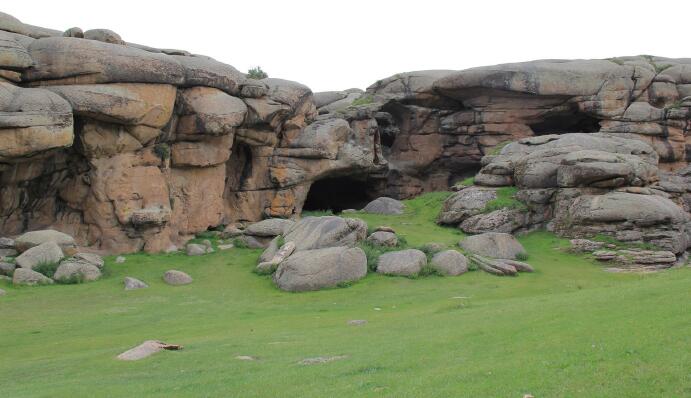
Distant view of Tongtiandong Cave Site
Neolithic Jiaojia site in Zhangqiu District, Jinan, Shandong Province
The site is an central settlement of the Dawenkou culture north of the Tai Mountains. Features unearthed at the site include a surrounding wall and ditch, 215 burials, 116 rooms, 1 kiln, and 974 pits. The discoveries are important for the research on settlement pattern and development of social complexity in the northern area of the Dawenkou culture. The large amount of jade objects are especially significant for the understanding of the communication between Dawenkou and the Liangzhu culture to its south and the Taosi culture to its west.
More Details:http://kaogu.cn/en/News/New_discoveries/2018/0323/61433.html
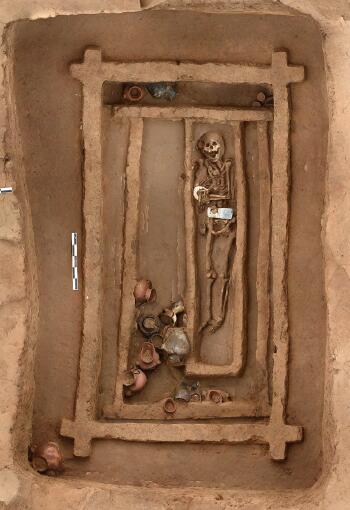
Tomb M152
Nanshan site in Mingxi County, Sanming City, Fujian Province
Five layer of cultural deposits dating from 5800 to 3500 BP were found at the site. Flotation of soil samples yielded grains of 38 species of plants, including rice, millet, broomcorn millet, barley and soybean, which are significant for the research on Neolithic subsistence economy and cultural communication in central Fujian province.
More Details:http://kaogu.cn/en/News/New_discoveries/2018/0130/60918.html

Panicum miliaceum
This large settlement of the Zeng State of the Spring and Autumn period consists of a cemetery, residential area with house foundations and metallurgical workshops. The large burial with 9 bronze ding-tripods, and the sacrificial pit with 7 chariots indicate that the site might be the capital of the Zeng State.
More Details:http://kaogu.cn/en/News/New_discoveries/2018/0206/61045.html
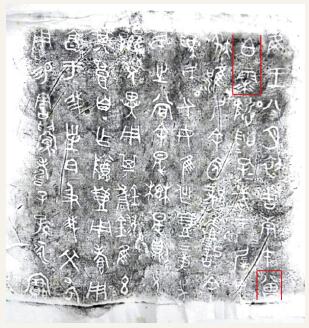
The inscription showed Marquis Qi of Zeng
Gujun site in Nanqiao Township, Xingtang County, Hebei Province
Totally 36 burials, 7 chariot pits, 50 wells, 420 ash pits, 2 kilns, 2 hearth from Eastern Zhou Period had been unearthed at the site, together with more than 1000 pieces of bronze, gold, jade, ceramic, shell and bone objects with characteristics of the northern nationalities. All these might be the noble cemetery of the Rong and Di peoples in north region from Late Spring & Autumn Period to Early Warring States Period, and also the residential area of Early Warring States Period in this region.
More Details:http://kaogu.cn/en/News/New_discoveries/2018/0212/61105.html
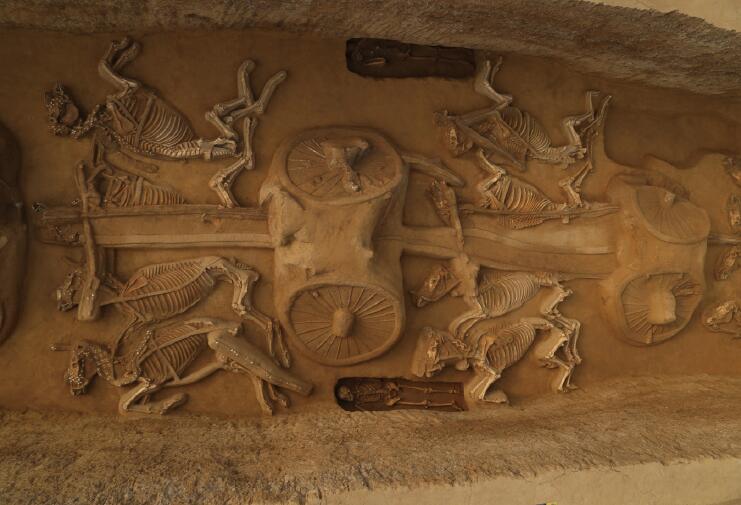
The second and the third chariots in No.2 Chariot and Horses Burials
Baomacheng site in Antu County, Jilin Province
The site had been the temple of the Changbaishan mountain god of the Jin Dynasty. Discoveries in the 2017 season include a large rammed earth foundation and the southern gate. This site is the only royal ritual compound of the Jin Dynasty in northeast China and is important for the research on strategies of the dynasty for the control of northeast frontier area.
More Details:http://kaogu.cn/en/News/New_discoveries/2018/0130/60918.html
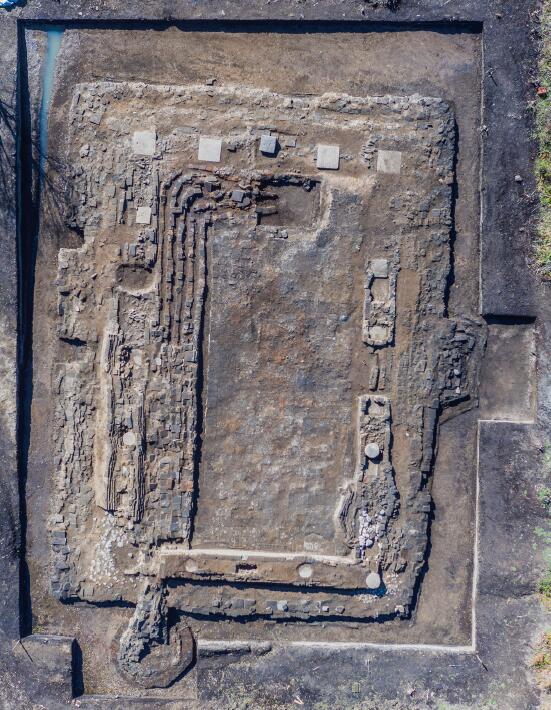
The architectural remains JZ4
Dr. Hong Shi, head of the Archaeology Press, presided the forum. More than 300 audiences including archaeologists, scholars and graduate students from different institutions, museums and universities and journalists from different media joined the event.
(Photo: Archaeology Press IA CASS)

